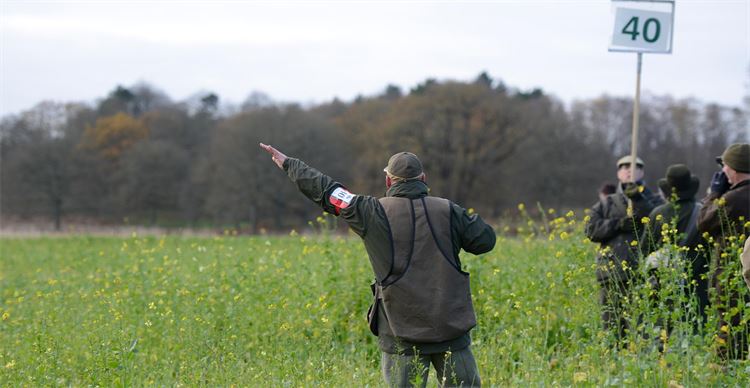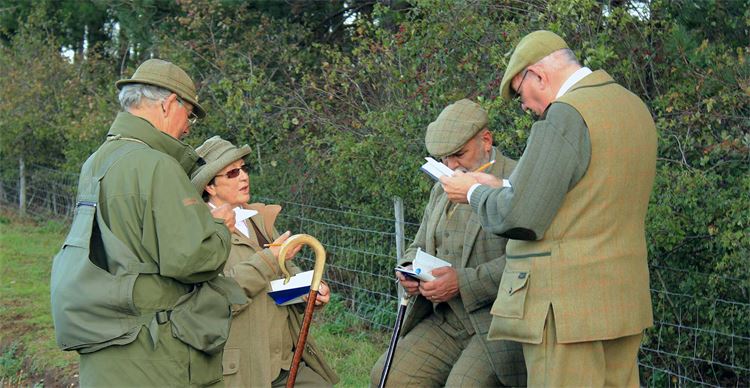Field trials are gundog competitions run to assess the work of gundogs in the shooting field, with the dogs judged on how they deal with both live and unhandled shot game.
There are numerous criteria against which field trial judges will assess competing dogs in both retriever and spaniel trials. Although the weight given to individual criteria will naturally differ between the two types of trial, I will try to provide a broad overview of both the credit points and faults that I have witnessed as a judge, competitor, trainer and Gun over the years.
Credit points
Natural game-finding ability
The judges’ job is to find the dog which pleases them most on the day in terms of the quality of its work, as if it were working on a shoot day. Therefore, dogs which display good, natural game-finding ability and initiative when hunting and retrieving will be placed above those which have to be handled to their game. This is a very important quality – the best dogs usually require the least handling and appear to have an instinctive feel for direction, making a difficult find look relatively simple.
Control
Judges expect competing dogs to be steady to flushed or shot game, staying completely calm and composed until they are given the green light to make the retrieve. Control is at the core of all gundog trials and threads its way through almost all of the following points.

Clean, quick retrieving and good delivery
In a field trial, the judging team will be looking for a quick and unfussy pick-up followed by a fast return. And, whilst all dogs will from time to time put a bird down to get a firmer grip, a dog will always be marked down for a sloppy retrieve. The handler will also be marked down for snatching or dragging the retrieve from the dog’s mouth.
If a dog has been sent for a runner and performs indifferently, it will be called up. Other dogs will then be tried on the same retrieve, presenting the chance of an eye-wipe.
Marking ability
The judge will credit a dog on its retrieve for good marking. A dog which goes straight to the fall and gets on with the job is what the judges want to see. Similarly, the ability to take a line on a hare, wounded rabbit or bird will be credited by the judging panel.
Ground treatment and using the wind
Ground treatment and the correct use of the wind is vitally important in field trials, as it is in the shooting field. Good ground treatment is when a dog holds the ground positively as it looks for game to flush or retrieve. The dog should be controlled in its manner, but it should still hunt with pace, enthusiasm, power and style.

As for wind, a dog hunting a flat pattern in front of the handler with a strong tailwind (i.e. blowing from the dog towards the quarry) will not find a rabbit in a phone box! So, understanding how a dog should hunt, and using the direction of the wind to the dog’s advantage is crucially important. I have seen handlers hunting a tailwind, running behind their dogs in the belief they are pulling on in front, but they are rarely successful. Stand still, allow the dog to cast out wide and hunt the wind back towards you and the Guns.
A dog that is trained and experienced in these areas looks impressive and stylish and will almost certainly catch the eye of the judges.
Quiet handling
The less interruption and interference a dog receives from its handler, the better. A dog that hunts and retrieves with minimal handling not only demonstrates a natural ability to find game, but also shows professionalism and indicates to the judges that the handler is in tune with his/her dog. In a field trial you are ultimately trying to replicate a shoot day where having to give your dog a lot of direction and instruction would be a nuisance.
Faults
Hard mouth
Once retrieved, all game is examined for signs of a hard mouth. Evidence of damage to birds can be difficult to judge and requires experience – is it damage caused by the dog, or by the shot and/or impact of the bird hitting the ground? It is not always straightforward, and a visible inspection will not always disclose damage, so examination with one’s hands is required.

A decision by the judges on a hard mouth will stay with a dog throughout its career and life. Even its breeding, sire/dam, siblings and offspring can be affected by a reputation for being hard-mouthed. So these are not decisions that judges take lightly. They will be in no doubt whatsoever that the dog has damaged the bird before eliminating it from the trial.
I personally spend an average of four to five days a week during the shooting season shooting over dogs or picking-up, so I am absolutely confident that I am able to make a sound decision in this regard.
It is my view that judges who don’t shoot are at a disadvantage in this respect, as they have less of an understanding of the various elements that can contribute to game appearing as though it has been damaged by a hard-mouthed dog. Shot size, choke, bore size and range can all be factors.
Running-in or chasing
Running-in is when a bird has been shot and a dog releases itself without permission from its handler and before the judge has given the go-ahead. Bear in mind that the atmosphere at a field trial is very different to that of training alone – there is a lot more going on and dogs can be affected by the nervous tension.
Training days that properly simulate the atmosphere, procedures and routine of a field trial can really help prepare both dogs and handlers for the real thing.

Not quartering or marking ground
Once a dog is in the marked area, the handler must be able to hold it there, aiding it to find the game quickly and efficiently. Judges don’t want to see a dog straying 30 or 40 yards from the marked area.
The size of the area in which the judges will expect the dog to be held will vary according to the accuracy of the mark. It could be the size of a Land Rover or it could be as large as a centre circle on a football pitch.
Similarly, a dog that gets carried away and quarters poorly or doesn’t cover the ground methodically or thoroughly will be marked down in a trial.
The judge’s duty
Judges have an obligation to the competitors and dogs they judge to understand them. They must have in-depth knowledge of the breed and its behaviour and traits.
Competitors typically train a dog for two to three years before entering a trial, and put in hundreds of hours and miles of travelling, not to mention lessons, training days and time off work. It is a great expense. Judging is therefore a huge responsibility and should not be rushed into by handlers with limited experience in the shooting field, picking-up or trialling. Club secretaries and their field trial committees should also work together to find the best people for the job.
Personally, I like the four-judge system which allows new judges to get used to their role whilst learning from more experienced judges.
For anyone interested in judging field trials, carrying game is a good way to get into the line and experience a trial from the judges’ perspective. You can then become a judge’s steward which will help you to understand how a trial works. I am always happy to have someone alongside me during a trial and to answer any questions about what is going on and why I make the decisions I do.